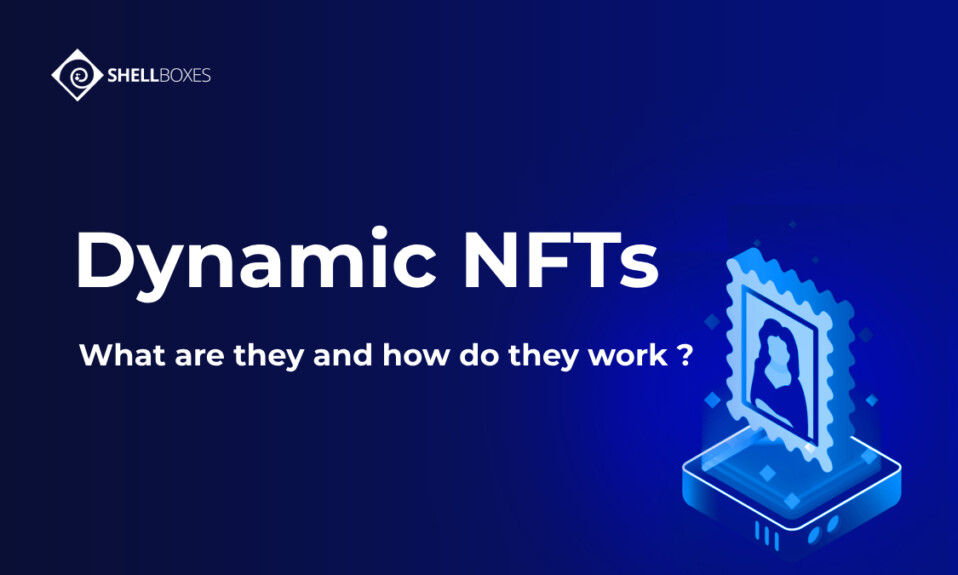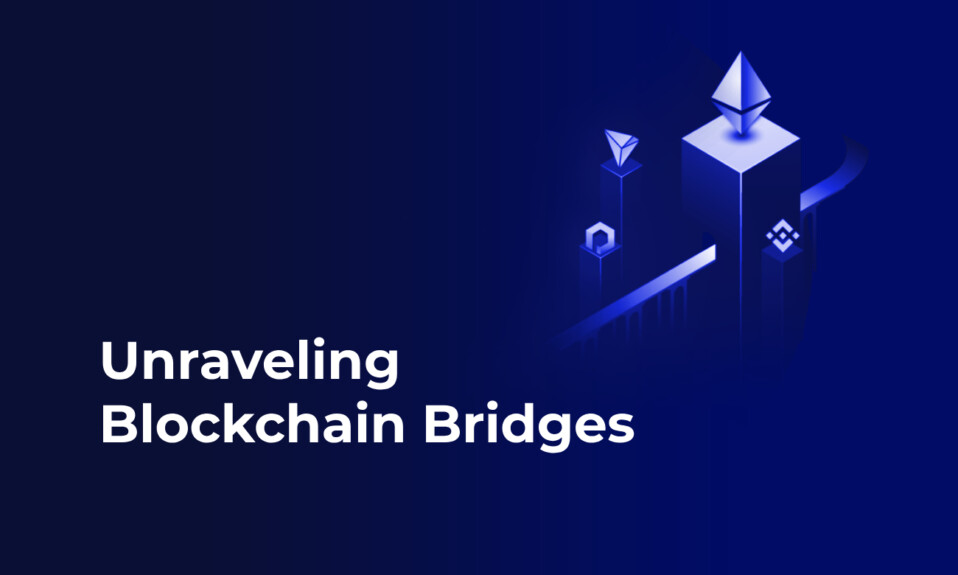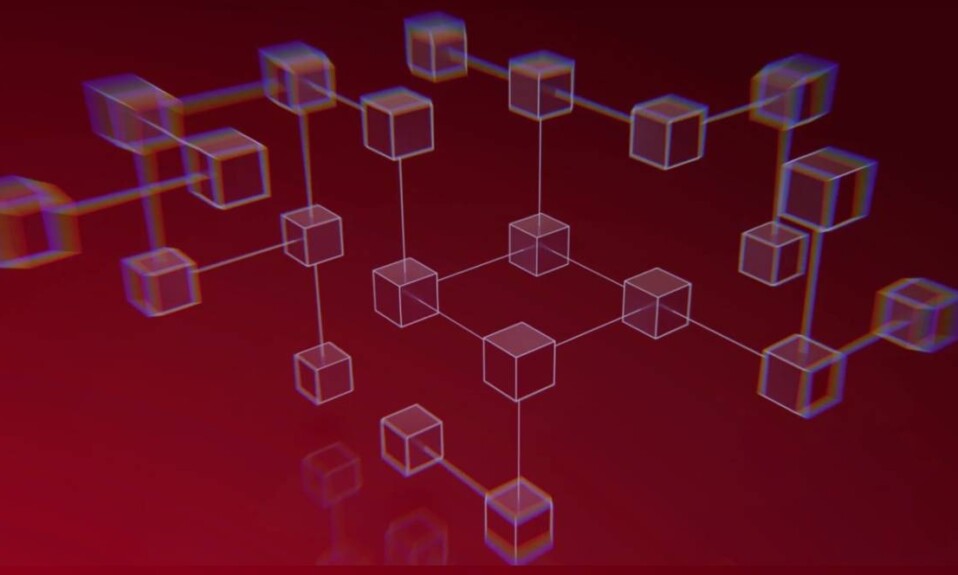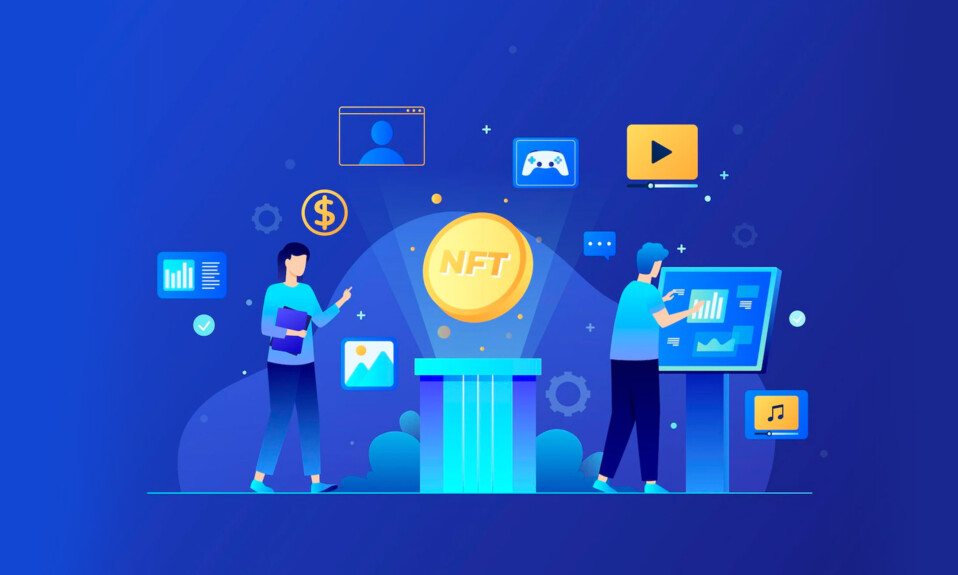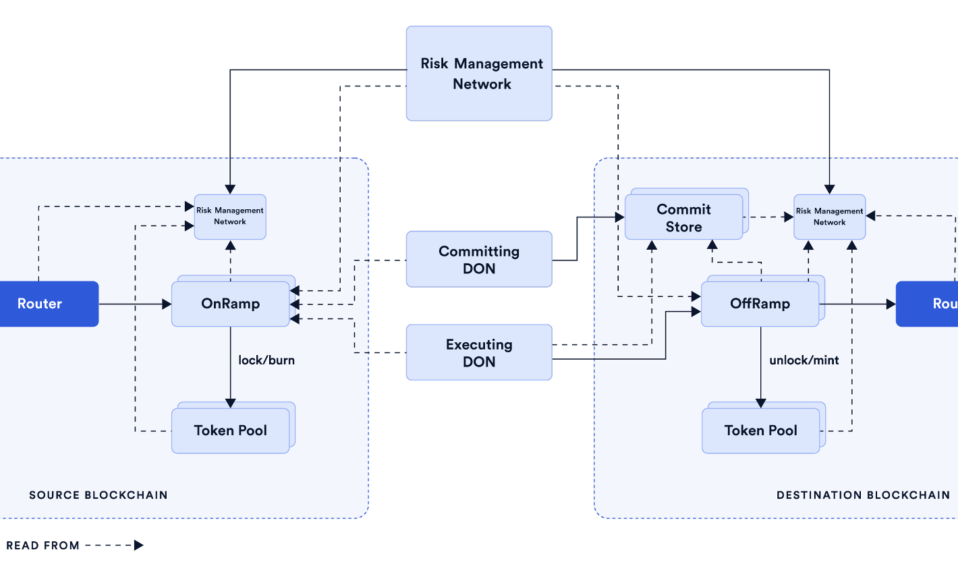
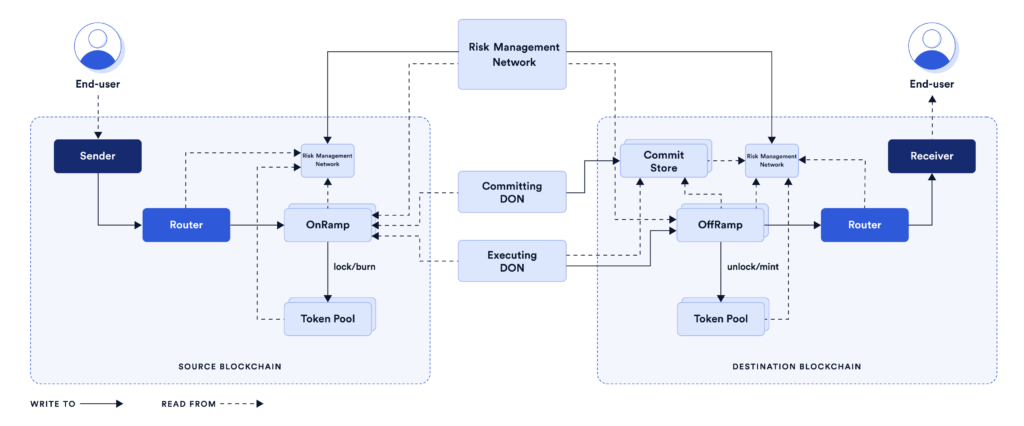
Ever tried to use different apps that just don’t play well together? It’s like trying to plug a USB drive into a typewriter—frustrating and completely ineffective. Now, imagine the same issue in the blockchain world, where isolated networks can’t easily share data or assets. It’s a significant roadblock for developers and users alike.
Enter Chainlink’s Cross-Chain Interoperability Protocol (CCIP). Picture a blockchain ecosystem where networks interact seamlessly, breaking down barriers and creating new opportunities. CCIP is here to turn this vision into reality, providing a universal standard for cross-chain communication.
In the following sections, we’ll delve into the significance of CCIP, how it works, and the transformative impact it can have on the blockchain industry. Get ready to discover how Chainlink is unlocking the future of blockchain interoperability.
Follow us on Twitter @Shellboxes for the latest web3 insights
Understanding the Need for Interoperability
In the current blockchain landscape, each network functions like a standalone island, operating under its own set of rules and limitations. This isolation restricts the seamless flow of data and assets, posing significant challenges for developers and users alike. These barriers hinder the development of advanced decentralized applications (dApps) and slow the broader adoption of blockchain technology. Without interoperability, the full potential of blockchain remains largely untapped.
In essence, interoperability is about enabling different systems or networks to exchange information, even if they are not inherently compatible. This shared understanding ensures that all parties trust the exchanged data. As the Web3 ecosystem grows with the rise of various layer-1 blockchains and layer-2 scaling solutions, each offering unique approaches to scalability, security, and trust, the need for interoperability becomes more critical.
Blockchains, by their nature, are isolated and cannot natively communicate with traditional systems or other blockchains to make external API calls or interact. This limitation is known as the oracle problem and highlights the need for robust interoperability protocols. These protocols act as a bridge, allowing different blockchain networks to communicate through a unified middleware solution. Without such protocols, developers would face the daunting task of creating separate implementations for each cross-chain interaction, which is time-consuming, resource-intensive, and complex.
What is CCIP?
Chainlink’s Cross-Chain Interoperability Protocol (CCIP) is an innovative, universal standard designed to facilitate secure and reliable cross-chain communication. By leveraging Chainlink’s decentralized oracle network, CCIP ensures seamless interactions between different blockchains, breaking down the barriers that currently isolate blockchain networks.
CCIP’s architecture guarantees that cross-chain transactions are as secure as those conducted within a single blockchain. This is achieved by harnessing the security and decentralization strengths inherent in Chainlink’s oracle network. Here are the key capabilities of CCIP:
- Data and Message Transmission: CCIP enables the transmission of arbitrary data and messages (encoded as bytes) to a smart contract on a different blockchain. This feature allows developers to trigger various actions on the receiving smart contract, such as rebalancing an index, minting an NFT, or executing a function with custom parameters. The flexibility of data and message transmission opens up a myriad of possibilities for creating complex, multi-chain dApps.
- Token Transfer: With CCIP, tokens can be transferred seamlessly to a smart contract or directly to an Externally Owned Account (EOA) on another blockchain. This capability simplifies cross-chain token movements, ensuring that assets can flow freely and securely across different networks.
- Programmable Token Transfer: This advanced feature allows for the simultaneous transfer of tokens and arbitrary data within a single transaction. Users can send tokens along with specific instructions on how to utilize those tokens. For instance, a user could transfer tokens to a lending protocol with directives to use those tokens as collateral for a loan, with another asset being borrowed and sent back to the user. This programmable capability enhances the functionality and usability of token transfers in a cross-chain environment.
Example Use Cases
- Cross-chain DeFi Applications: Enable decentralized finance platforms to leverage assets from multiple blockchains.
- Multi-chain NFTs: Allow non-fungible tokens to exist and be traded across different blockchains.
- Enterprise Blockchain Interoperability: Bridge private enterprise blockchains with public networks for broader applications.
Benefits of CCIP
- For Developers
CCIP simplifies the development process for creating interoperable dApps, allowing access to a broader market by leveraging multiple blockchains. - For Users
Users benefit from an enhanced experience with seamless cross-chain interactions, increased security, and trust in cross-chain transactions. - For the Blockchain Ecosystem
CCIP fosters innovation and collaboration across different blockchain projects, driving mainstream adoption of blockchain technology.
How CCIP Works: A Detailed Breakdown
To understand how Chainlink’s Cross-Chain Interoperability Protocol (CCIP) facilitates secure and efficient cross-chain transactions,we can break down the process into distinct components, each with a specific role and set of actions. The architecture diagram below illustrates the overall structure of the CCIP system and the interactions between its various components.
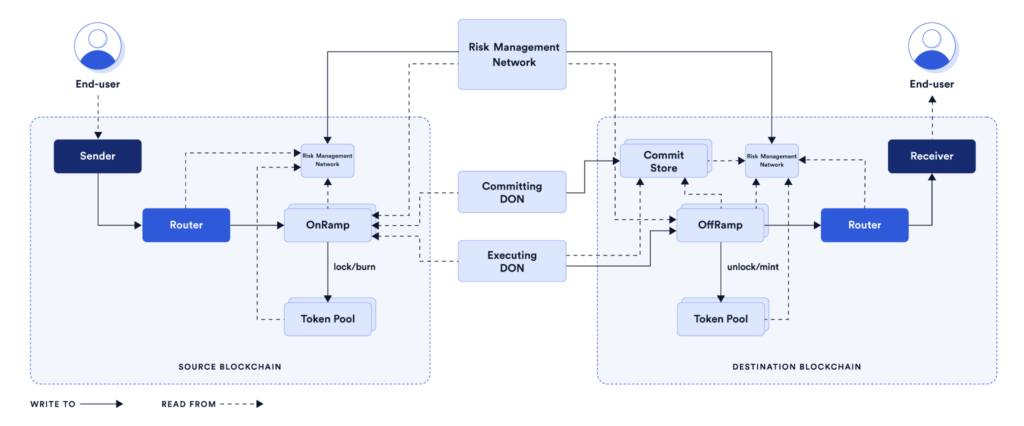
Detailed Process Flow of Chainlink CCIP
- Initiation : The end-user initiates a cross-chain transaction by sending a request to the Sender smart contract on the source blockchain. This initial action starts the CCIP process and involves specifying the details of the transaction, such as the amount of tokens to be transferred or the message to be relayed. The Sender contract is the entry point for all cross-chain interactions and prepares the transaction for further processing.
- Routing : Once the transaction request is received, the Router contract on the source blockchain takes over the responsibility of directing the transaction. It reads the details from the Sender smart contract and forwards the transaction information to the OnRamp contract. The Router ensures that the transaction is sent to the correct OnRamp based on the intended destination blockchain.
- Transaction Preparation : The OnRamp contract performs several critical functions to prepare the transaction for cross-chain transfer. It first handles token management by either locking or burning the tokens in the Token Pool on the source blockchain, depending on the transaction’s requirements. The OnRamp then sends the transaction data to the Risk Management Network for validation and verification, ensuring that the transaction adheres to the protocol’s rules and is legitimate.
- Risk Assessment (Source Blockchain) : The Risk Management Network on the source blockchain is responsible for assessing the integrity and security of the transaction. This network of independent nodes evaluates the transaction data to verify its validity. If the transaction is confirmed as valid, the network informs the OnRamp contract, which can then proceed with the transaction. This step ensures that only legitimate and verified transactions are processed.
- Token Management (Source Blockchain) : In this phase, the Token Pool on the source blockchain manages the tokens according to the transaction’s requirements. If the transaction involves a token transfer, the tokens are either locked or burned based on the direction of the transfer and the specific token mechanisms involved. This action secures the tokens and prepares them for transfer to the destination blockchain.
- Transaction Commitment : The Committing DON (Decentralized Oracle Network) creates a Merkle Tree from the transaction data and generates a Merkle root. This Merkle root, which serves as a compact representation of the transaction data, is signed by a quorum of nodes. The signed Merkle root is then committed to the Commit Store contract on the destination blockchain, establishing a record of the transaction data that will be used for verification and execution.
- Transaction Execution : The Executing DON is responsible for executing the cross-chain transaction on the destination blockchain. It monitors the OnRamp contract on the source blockchain for relevant events and checks whether the transaction data is part of the committed Merkle root stored in the Commit Store. After the Risk Management Network on the destination blockchain blesses the Merkle root, the Executing DON creates a Merkle proof and uses it to call the OffRamp contract to finalize the transaction.
- Commit Store : The Commit Store contract on the destination blockchain plays a key role in the transaction process by storing the Merkle root of committed transactions. This contract holds the Merkle root until it is confirmed as valid by the Risk Management Network. The stored Merkle root serves as a reference for the Executing DON to verify the legitimacy of the transaction before proceeding with execution.
- Transaction Finalization : The OffRamp contract finalizes the transaction on the destination blockchain. It verifies the Merkle proof against the Merkle root stored in the Commit Store to ensure the transaction’s validity. If the proof is valid, the OffRamp contract manages token operations, such as unlocking or minting tokens in the Token Pool on the destination blockchain. The OffRamp then forwards the transaction details to the Router contract on the destination blockchain for the final step.
- Routing on Destination Blockchain : The Router contract on the destination blockchain receives the finalized transaction details from the OffRamp. It is responsible for directing the transaction to the Receiver smart contract, which will complete the process. The Router ensures that the transaction outcome, whether it’s a token transfer or a message relay, is correctly delivered to the intended recipient.
- Completion : Finally, the Receiver smart contract on the destination blockchain completes the cross-chain transaction. It processes the transaction outcome and delivers the result to the end-user. This step finalizes the cross-chain transfer process, ensuring that the end-user’s request is fulfilled, and the transaction is completed.
Conclusion
Chainlink’s Cross-Chain Interoperability Protocol (CCIP) is poised to unlock the future of blockchain technology by addressing one of its most critical challenges—interoperability. By enabling secure and reliable cross-chain communication, CCIP opens up new possibilities for developers, users, and the entire blockchain ecosystem. Stay updated with Chainlink’s developments and explore more about CCIP by visiting Chainlink’s Chainlink: The Industry-Standard Web3 Services Platform official website.
What do you think about the future of blockchain interoperability protocols?
Share your thoughts and questions in the comments below!
Learn more about securing your Web3.0 project by reaching out to our security experts at [email protected] or requesting an audit
Follow us on Twitter @Shellboxes for the latest web3 insights

